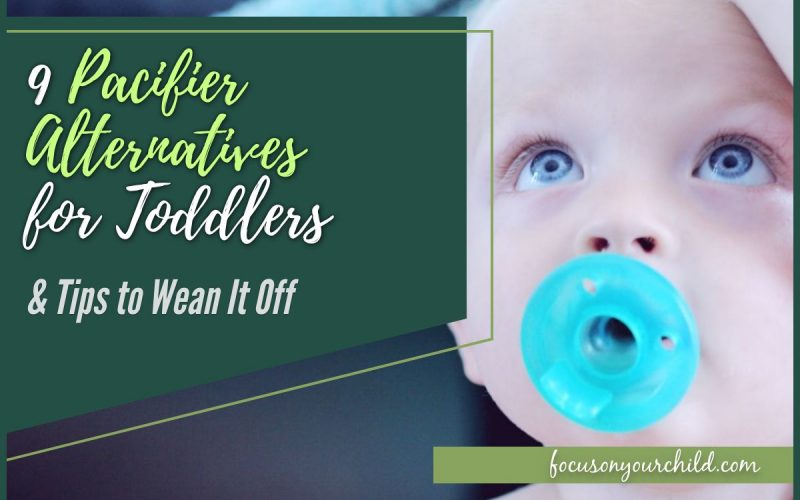Pacifiers are one of the most commonly used baby accessories today, and for good reason. They are known for their ability to soothe fussy babies and help put them to sleep. Sucking on pacifiers has also been shown to have pain-relieving effects which may make vaccinations and doctor’s visits more bearable for you and your baby. Pacifier use also lowers babies’ risk of SIDS by up to 90%. It is also much easier to wean a baby off pacifier sucking as opposed to thumb sucking.
After a certain age, pacifiers begin to do more harm than good. Incidence of early breast weaning and otitis media (middle ear infections) increase with pacifier use after 6 months of age. Dental issues increase with prolonged pacifier use after 24 months of age.
There are many alternatives to pacifier soothing for you and your child, whether you are trying to wean your baby off the pacifier or want to avoid pacifier use altogether. A fussy baby may be soothed by swaddling, breastfeeding, being rocked back and forth, and skin-to-skin contact. With an older child, replacing the pacifier with another comfort object may prove successful in breaking the pacifier habit.
When Should You Start Pacifier Weaning?
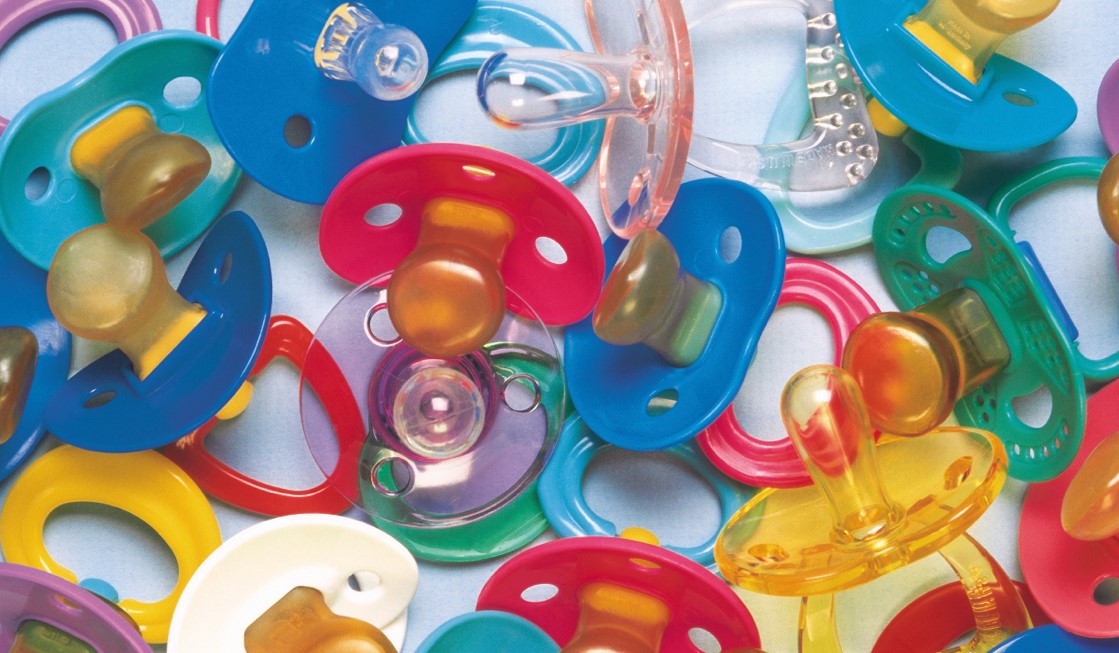
The American Academy of Pediatrics (AAP) recommends beginning weaning children off pacifiers by 6 months of age to reduce the risk of otitis media. Ideally, all pacifier use should cease by 2 years at most. Prolonged pacifier use can cause your child to become emotionally attached to it, making the weaning process harder.
Most children are emotionally ready to wean off of pacifier use by 2 years of age, and some children may self-wean before that, but others may need some help doing so. Providing your child with alternative comfort objects will help make the transition easier.
Tips for Weaning Pacifiers Off
-
Pick the Right Timing
It’s best to begin weaning at a time when your child is calm. Avoid weaning during high-stress events and adjustment periods when your child needs a way to self-soothe, such as long travels, stays in unfamiliar places such as hotels and new houses, starting daycare, and welcoming of new siblings.
-
Do It Gradually
It’s easier to wean pacifiers off by gradually limiting their use. Start by only letting your child use their pacifier at home, and work up to only giving them pacifiers in their bedroom by labeling rooms as off-limits to pacifiers one by one. Eventually, you can start only offering pacifiers at night and naptimes until you can remove them entirely.
-
Use Lots of Praise
Make a big deal out of it whenever your child goes without the pacifier. Continue to praise them whenever they do “grown-up” things like putting their own shoes on or picking out their own outfit. Congratulate them on being such a brave child or being a big kid and offer them little rewards like special snacks or small toys such as the ones here.
Kawaii Mochi Squishy Toys
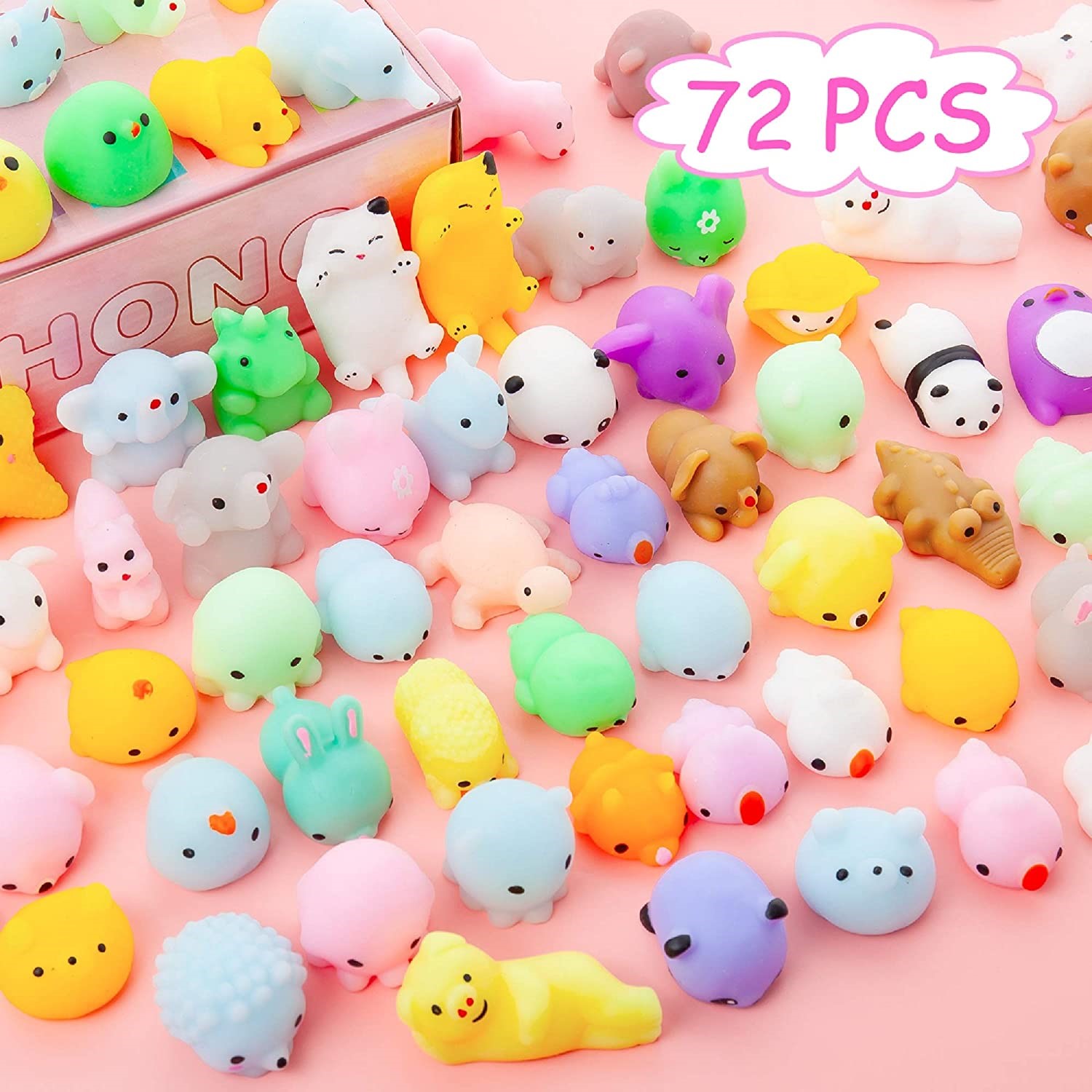
-
Keep Them Distracted
It’s hard to suck on a pacifier when you need your mouth to do other things. Keep your child otherwise engaged and distracted by singing songs or with conversation. You can also give your child a bubble-blowing wand or a wind musical instrument to keep their mouth occupied.
Kidzlane Karaoke Microphone for Kids
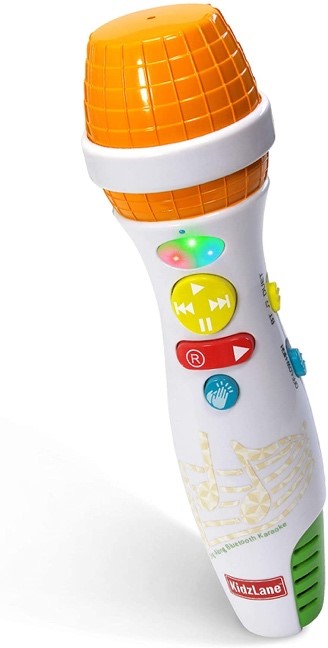
-
Make It Unappealing
Many parents are given the advice to trim the pacifier’s tip little by little to reduce sucking satisfaction. This may prove to be a choking hazard as pieces may break off and get caught in your child’s windpipe. A pacifier weaning system may be a better option than snipping the tip.
Pacifier weaning systems such as the one below come as a set of 5 pacifiers, each one modified to have a shorter tip than the last.
FridaBaby Paci Weaning System
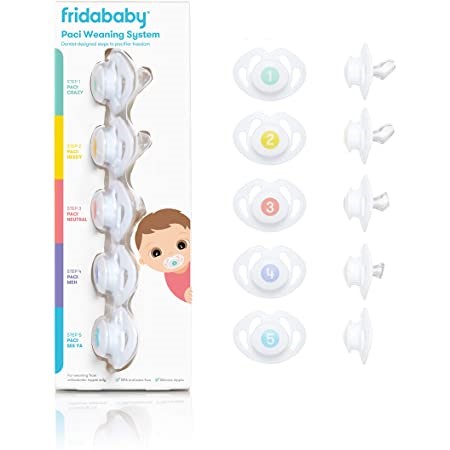
Deflating a pacifier by poking a few holes in the nipple with a sterilized needle may also reduce pacifier satisfaction.
Another way of making a pacifier more unappealing is by dipping it in some white vinegar or rubbing petroleum jelly over it. Your child will likely dislike the taste and mouthfeel of these substances and give up the pacifier.
-
Offer an Alternative Comfort Object
A comfort object or security item will help soothe your child during a transitional period such as leaving behind the pacifier. Alternatives to pacifiers could be a new blanket or stuffed toy, or even a night light by their bed.
-
Don’t Push Too Much
Because children use pacifiers as a way to soothe themselves, too much pushing to get rid of it stresses them out and has the opposite effect of making them even more attached to the pacifier.
-
Don’t Rely on It Too Much
Pacifiers can become bad habits for parents just as much as their children. It’s extremely easy to simply give your baby a pacifier every time they cry, but this may make you less sensitive to their cues and what their cries mean.
Instead of giving the pacifier immediately, check to see if they are hungry, need a diaper change, or just want your attention. Chances are you’ll be able to calm your baby by holding them, rocking, singing, or distracting them with toys or stories.
-
Use a Story
This method may work better if you have a slightly older child who is having a hard time with pacifier weaning.
Use a bedtime storybook such as this one to ease your child to the idea of leaving their pacifier behind. Telling your child that the “pacifier fairy” will come to take their pacifier and leave them with a shiny new toy just like in the story may be just the motivation they need to let go of their pacifier.
And of course, don’t forget to have the “pacifier fairy” leave a thank you note and a new toy for when your child wakes up!
Pacita the Pacifier Fairy (Big Kid Chronicles)
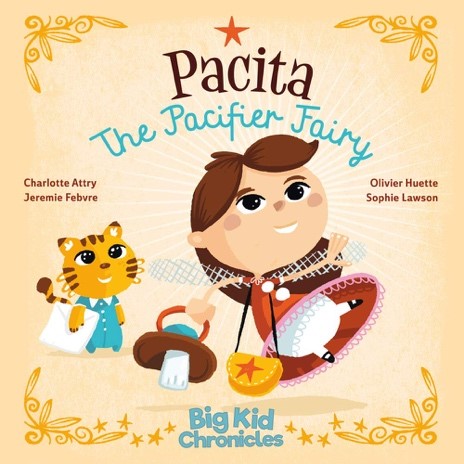
-
Go Cold Turkey
Some parents find that taking away pacifiers cold turkey works well enough. Doing this will no doubt result in some tears and a few meltdowns, but may work out in the end if you can stick to it.
Start by telling your child that because they’ve gotten big enough to go without a pacifier, you will be taking them away to give to a baby who needs them more in a few days. Remind them about it daily until you take it away. When the day comes, take away all pacifiers. Keeping the pacifiers out of sight will hopefully help your child forget about them in a few days.
You may also want to replace the pacifier with another comfort object such as a stuffed animal or blanket. Just keep in mind that blankets and other loose objects should not be left in a crib with a baby under 12 months of age.
Pacifier Alternatives
If you want to avoid using pacifiers or want to find alternatives for your baby, making use of the 5 womb-like sensations, otherwise known as the 5 S’ as described by pediatrician Dr. Harvey Karp, can help soothe a baby under 3 months.
-
Sucking
Babies start sucking before they’re even born. While in utero, babies will suck on their fingers, toes, and even the umbilical cord.
Breastfeeding to calm your baby and put them to sleep is also known as comfort nursing. Comfort nursing is a safe and natural way of soothing your baby. In one study, breastfeeding was found to be more effective than topical anesthetic at reducing pain following a heel prick procedure. Contrary to popular belief, comfort nursing will not make you spoil your baby or overfeed them.
Aside from calming and soothing a crying baby, comfort nursing also provides extra nutrients that support your baby’s weight gain and growth spurts.
If you however find that your baby is constantly nursing but isn’t gaining weight, you may want to discuss it with a lactation consultant or your child’s pediatrician to determine if there are any issues in your baby’s feeding.
-
Swaddling
Swaddling has been well known to keep babies cozy and warm by mimicking the warmth of the parent’s womb, helping them fall asleep faster. Swaddling may also inhibit your baby’s Moro reflex, thereby helping them stay asleep longer.
Take care to practice proper swaddling techniques, as improper swaddling techniques such as wrapping too snuggly around the legs could increase the risk of developmental hip dysplasia. Swaddling should be ceased once your child starts rolling over or is strong enough to break out of the swaddle, as it may put them in an unsafe sleeping position, increasing the risk of SIDS.
Cuddlebug Adjustable Baby Swaddle Blanket & Wrap
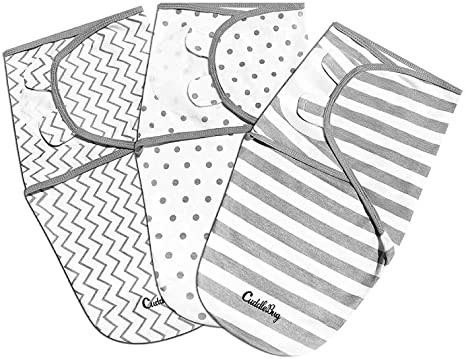
-
Swinging
Babies are used to being rocked and bounced in the womb as their parent moves around through the day. Rocking your baby in your arms or swinging them back and forth a few inches will help calm an agitated baby.
Placing your baby in a swing or bouncer works similarly. You may even try going on car rides and walks with your baby to help them fall asleep.
Graco Simple Sway Swing
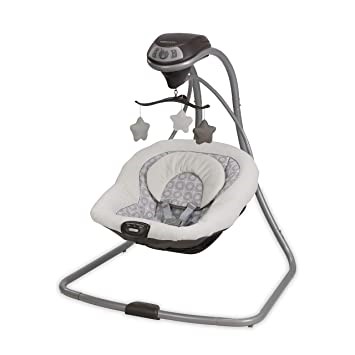
-
Shushing
The sounds babies hear while in their parent’s womb sound a lot like white noise. Putting your mouth near your baby’s ear and making a shushing noise replicates the womb sounds fairly well.
Using a white noise machine in your baby’s room is an effective alternative to pacifier soothing. Studies have found that using white noise helps babies fall asleep within minutes and even reduces the perceived pain of colicky babies. They may also block household noises and street sounds which may wake your baby.
REACHER R2 White Noise Machine and Night Light

-
Side/Stomach Position
Holding your baby on their stomach or side in your lap, arms, or against your shoulder gives them a sense of security which is great for soothing. The skin-to-skin contact this offers also brings benefits for both you and your child.
Babies left to sleep on their stomachs or sides often stay asleep longer, but are at a higher risk of SIDS. Use the side and stomach positions for soothing only, never for sleeping. Always place your baby on their back to sleep until they are at least a year old.
For toddlers and older children, offering pacifier alternatives and security objects may be a good way to ease their transition out of pacifier soothing.
-
Teething Toys
Teething is a rather uncomfortable time for babies, and it’s natural for your sore gummed baby to want some extra comfort at this time. In the absence of a pacifier, your baby might start chewing on things in their vicinity – most of which won’t be sanitary. To help them feel better, try offering them a teething toy.
BPA-Free Silicone Teether for Babies
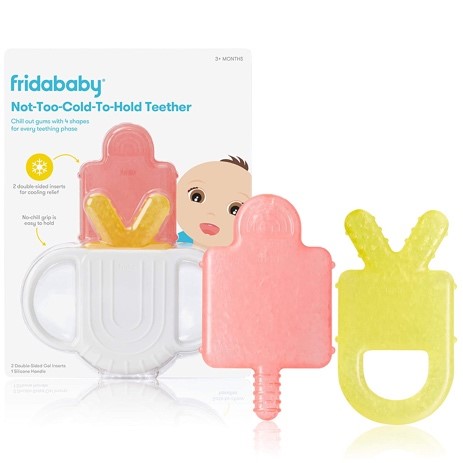
-
Stuffed Toy
If you had a baby shower or your child has had their first birthday, you probably have a couple of these lying around already.
Offer your child a soft toy or blanket they can take to bed with them. Tell them stories about how their new friend will keep them safe while they sleep. Soon enough, they’ll begin to associate the toy with a sense of security.
Stuffed Elephant Plush Animal
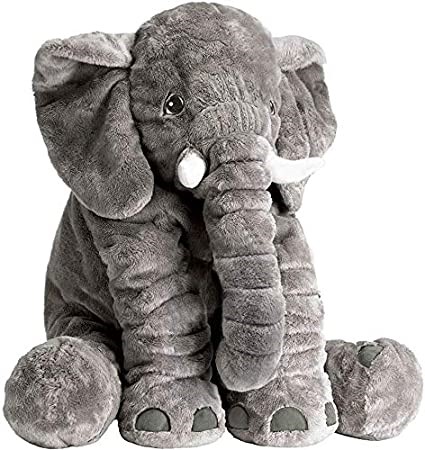
-
New Toy
For an older child, propose that they exchange their pacifier for a new toy. You can even take them to the store and have them “pay” for their new toy with the pacifier to signify the end of their pacifier days.
-
Sippy Cup
If your child finds the sucking sensation of pacifiers soothing, try offering them a different kind of sucking by using a sippy cup. When they wake up in the middle of the night, offer them a sip to help them get back to sleep.
Using sippy cups may help with breast and bottle weaning as well. If your child is old enough, try leaving them with a spill-proof cup in their room where they easily reach it at night.
NUK Simply Natural Learner Cup
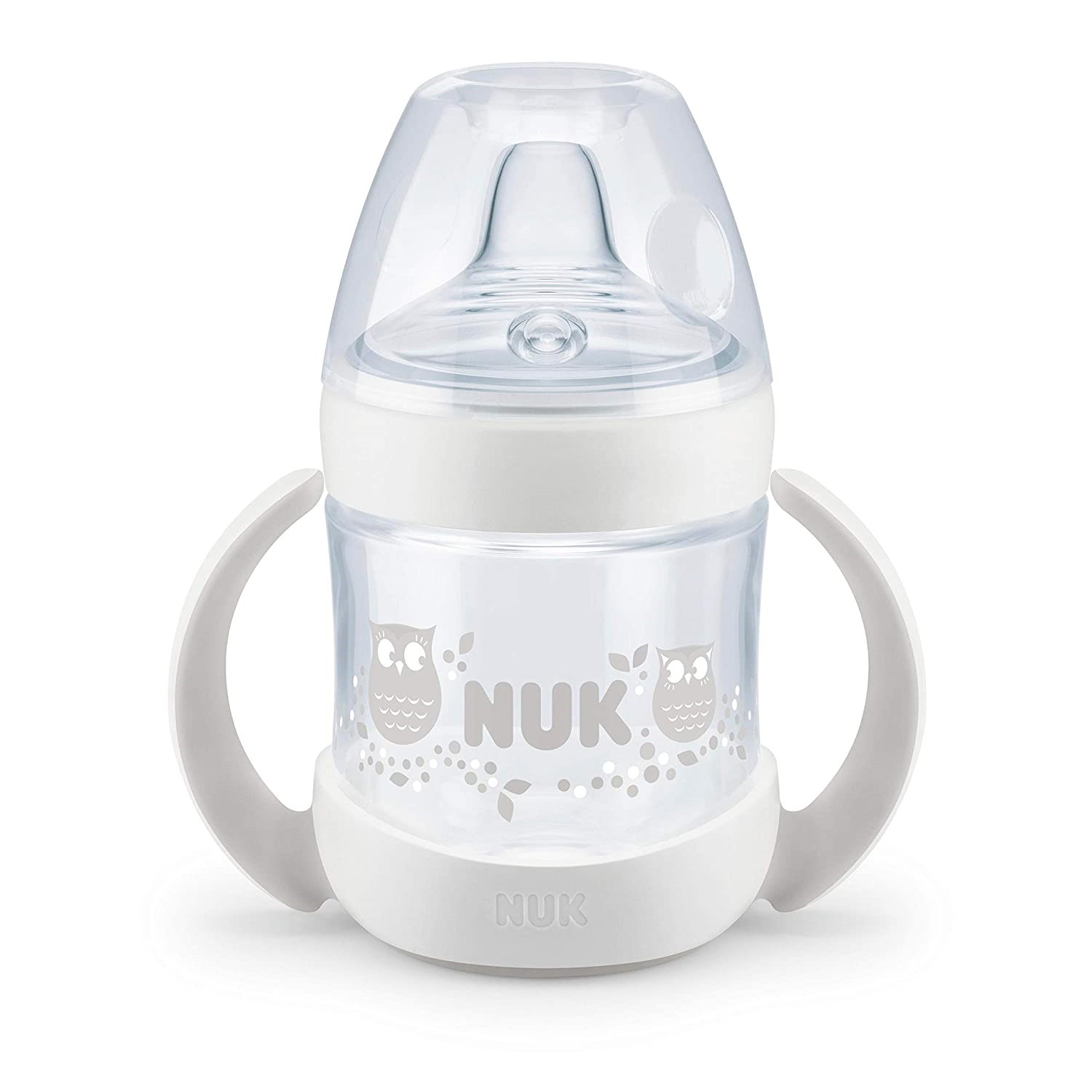
-
Night Light
Placing a night light in your child’s room can help them feel more secure sleeping without a pacifier. If your child is old enough, you might even have them pick out a night light for their room.
Owl Night Light for Kids
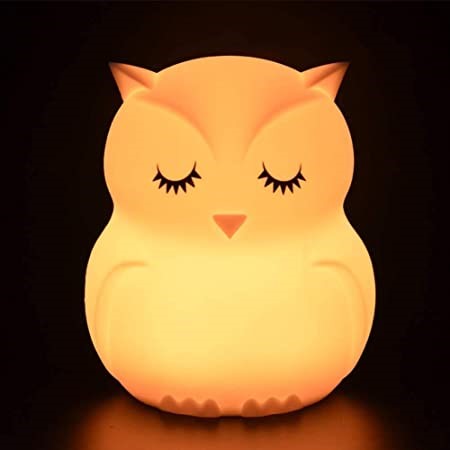
Using a ceiling projector works well and distracts your child from thoughts about their pacifier. Just make sure that the projector isn’t too stimulating that it keeps your child awake instead of helping them fall asleep. If you are worried about that, you may want to try using a night light first before experimenting with a projector.
Multifunctional Night Light Star Projector Lamp

Final Thoughts
No matter what pacifier weaning method you go with, patience and persistence are key. Don’t expect your child to go from using pacifiers all day to no pacifiers at all in one night. If your child willingly traded in their pacifier for a new toy this morning, don’t be surprised if they have a meltdown begging you for a pacifier at naptime.
Pacifier weaning is undoubtedly difficult and stressful for all parties involved, but once you learn to manage without it, will be so much better off. Once the pacifier is gone for good, don’t give in to the temptation of giving it back, no matter how hard it may be. A few nights of tears and tantrums will pay off well once your child is completely pacifier-free.
